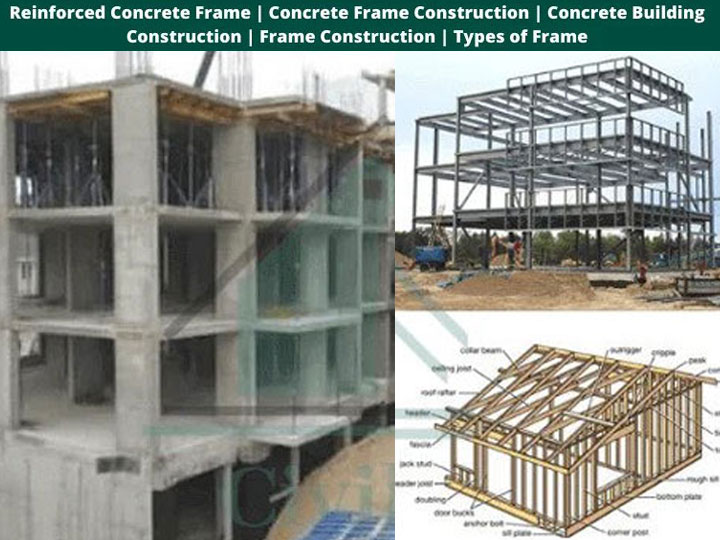Building a superstructure is not easy, and so you need a proper method to erect a building superstructure. The RCC frame construction is one of the most common and effective types of construction methodology. Today, we will talk about the types and advantages of the RCC Frame Construction.
In the reinforced concrete frame construction method, a superstructure consisting of both the horizontal and vertical structural components is erected, and then the walls and other stuff are created.
It is also known, casually, as the skeleton of the whole structure - indeed, it works just like a skeleton in a building. To fact, the RCC frame is responsible for carrying the whole weight of the structure. Therefore, it is the most important part of constructing any building that is planned this way. And the vertical load-bearing members, that is, the columns are even more important in this, since if a column is damaged, everything above it is in danger.
The RCC frame construction method is a monolithic construction methodology. That means, the whole frame structure is created as a single unit. The casting, however, has to be done in phases. However, the end result is one whole object - the frame of the building.
The 'RCC' part in the RCC Frame Construction phrase stands for 'Reinforced Cement Concrete'. Accordingly, the building frame is made out of concrete imbued with steel reinforcements. The compressive loads in the building and on the building are carried by the concrete part (mostly), and the steel bars counter the tensile forces generated.
Columns are the vertical components that carry the loads from horizontal components to a footing or lower level columns.
A horizontal component, it carries loads from slabs to columns.
The main horizontal component that provides the actual usable area in a floor.
In case the building is not big, or if a level needs substantial protection from outside, the walls can be cast of reinforced concrete and be a part of the RCC framework as well.
Clearly the first and foremost advantage of constructing RCC frames for buildings is that they provide a robust, durable skeleton for the building around which other, softer portions of the building can be built. The reinforced frame holds all the load of the building and resists external forces, protecting the softer components.
The RCC frame of a building is also very economical, compared to other ways we might need to prop up the building of similar specifications. The RCC frame construction methodology is versatile enough to be used in many kinds of buildings from residential to industrial to recreational.
To be sure, with the construction method getting standardized, the RCC frames have become easy to erect as well. We have standardized codes for every reasonable situation we might need to consider and thus everything can proceed in a disciplined, tried and tested manner.
There are two kinds of RCC frames - cast in situ and precast. The precast system needs a factory and assembling, so we are not including that in this discussion today. Read more about precast concrete here. The cast in situ method, which is the traditional way to construct mostly anything, follows the steps described below: A formwork or shuttering is a container-like shape created using planks or other stuff, intended to hold the semi-liquid concrete around the reinforcements and give it the desired shape. It is only a temporary part in construction. Follow the engineering drawing carefully to place reinforcement bars inside the formwork exactly as intended, with ties and stirrups. This is the most important part of RCC framework construction and no error is excused here, since any misuse of rebar in concrete may cause catastrophic failure. This step includes preparing the concrete and then pouring it in the formwork. Both steps need careful attention since it determines the quality of the concrete, thus the strength of the resulting structural member. It would take some time for the concrete to set (get solid). Curing is the process of the concrete getting hardened over a period of time. How long, that depends upon the grade or type of concrete that was prepared. Curing needs water to be given on the solid concrete.
Step 1: Build a formwork
Step 2: Fix reinforcement bars
Step 3. Concreting
Step 4. Wait for curing
